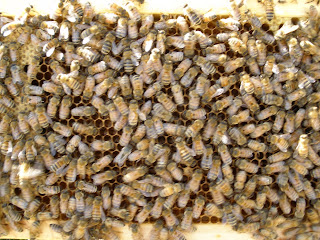In celebration for my new role (sigh) I created a new recipe. Well, at least I think I did so if you know about a recipe like this, don't burst my bubble. As far as I know, I've made it up.
There is this excellent chocolatier in my city and I must say that I visit her shop a few times a week to get a truffle or two. One of her candies is a lavender caramel covered in dark chocolate. It is so luxurious. I used this idea as my inspiration but I wanted to make a honey caramel instead of a karo syrup or sugar caramel. I did it on my first try and it is delicious. While they are cooling, I'm happy to share this recipe with you.
Lavender Infused Honey Caramel Chews
1 cup organic heavy cream
5-6 sprigs fresh English lavender, stems trimmed to just leave the flower cone intact
2 cups organic raw honey (I used a local wildflower honey that was pretty mild in flavor)
3 tablespoons organic butter
1/8 teaspoon salt
Course sea salt
1) Butter an 8x8 inch pan.
2) Heat cream and lavender in a heavy pot until fragrant. I'm sure this will be different for each time you make this depending on how intense the lavender is. I think in my case it took about 10-15 minutes starting with medium heat and then lowering it to low for the majority of the time.
3) Once you are satisfied with the intensity of the infusion, remove the sprigs and then strain out the remaining lavender flowers that have fallen from the sprigs.
4) Return the cream to the pot and add the honey. Cook this mixture until it reaches firm ball on your candy thermometer (about 245 degrees). The mixture will get foamy and rise so make sure you use an ample sized pot.
5) Remove from heat and stir in butter and salt. Once the butter has completely melted and you've stirred in all of the air bubbles until the molten caramel is smooth.
6) Pour the caramel into your buttered dish.
Let the caramel cool, cut into cubes or scoop out pieces and wrap in individual wax papers or cellophane like taffies. If you'd like, garnish with a pinch of coarse sea salt on each piece.
I hope you like it!
Daphne
























